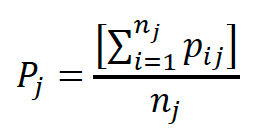Feasibility of extending SeabORD to the entire breeding season: study
SeabORD is a method that can assess displacement and barrier effects from offshore renewables on seabirds, but is currently limited to four species during the chick-rearing season. This review examined ways to improve the SeabORD model including extending to the entire breeding season.
This document is part of a collection
Appendix A: Technical description of the current approach for the mass-survival relationship used within SeabORD
1. At the start of each breeding season, each simulated adult (breeding) bird (indexed by the letter i) starts off with a body mass drawn from a Gaussian distribution with species-specific mean and standard deviations drawn from the Table on P23 of Searle et al 2014.
2. Body mass of each bird is updated on a daily basis according to an energetic model until the end of the breeding season under a number of different scenarios, synonymous with run, indexed by the letter j.
3. At the end of the breeding season, the mass of bird i under scenario j is standardised to mij (so that the average bird in each scenario has mean (mj) equal to zero), with potentially a rescaling in a manner appropriate to the literature-based survival function used for that species.
4. A survival probability pij is calculated for each bird using the formula

(Equation 1)
The values of s0j are taken from Table 3-3 of Searle et al 2015, choice of value being determined by species and scenario (low, medium or high survival). The values of b are taken for the relevant species either from Oro and Furness 2002 or Erikstad et al. 2009).
5. For each species, the mean survival probability across birds under scenario j is calculated as

(Equation 2)
where nj denotes the population size (note that there is a typographical error at the bottom of Page 26 of Searle et al., 2015 in which Pi is stated but Pj would have been correct).
Contact
Email: ScotMER@gov.scot
There is a problem
Thanks for your feedback